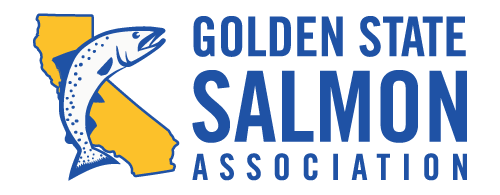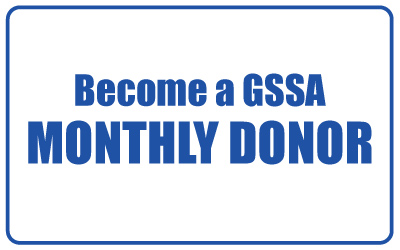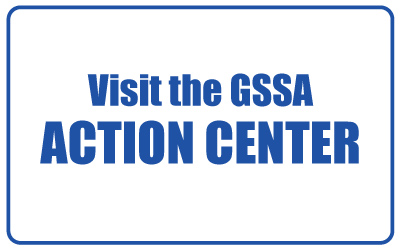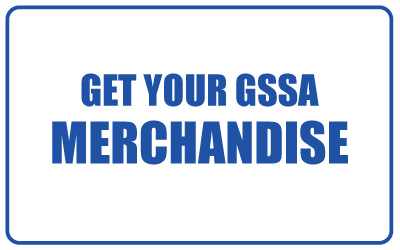Message from the Executive Director
In my first two weeks at Golden State Salmon Association (GSSA), I’ve seen the power of our members successfully petition Governor Newsom to rescind his order denying salmon the water they need to get to the ocean this year. I’ve seen our organization, friends and partners speak up for the tens of thousands of commercial and recreational fishermen and women, families, businesses and jobs in response to the salmon season closure. I’ve met with supporters, partner organizations, agency personnel, and business owners on Fisherman’s Wharf – seeing firsthand what salmon and GSSA mean to them and their livelihoods.
This is a pivotal time for salmon and a detrimental closure for everyone who relies on and appreciates this iconic species. And with a threat that may impact multiple salmon seasons, it is imperative for us to continue working on behalf of all our members. For the last 11 years, GSSA has established itself as a leading voice and cornerstone of salmon protection and restoration. I am deeply impressed by the commitment of the staff, board and membership, and look forward to all of us building on that foundation and supporting GSSA’s growth and effectiveness, which is needed now more than ever. I am eager to get to know all of you and work together to bring new programs and initiatives that restore California salmon for their economic, recreational, commercial, environmental, cultural and health values.
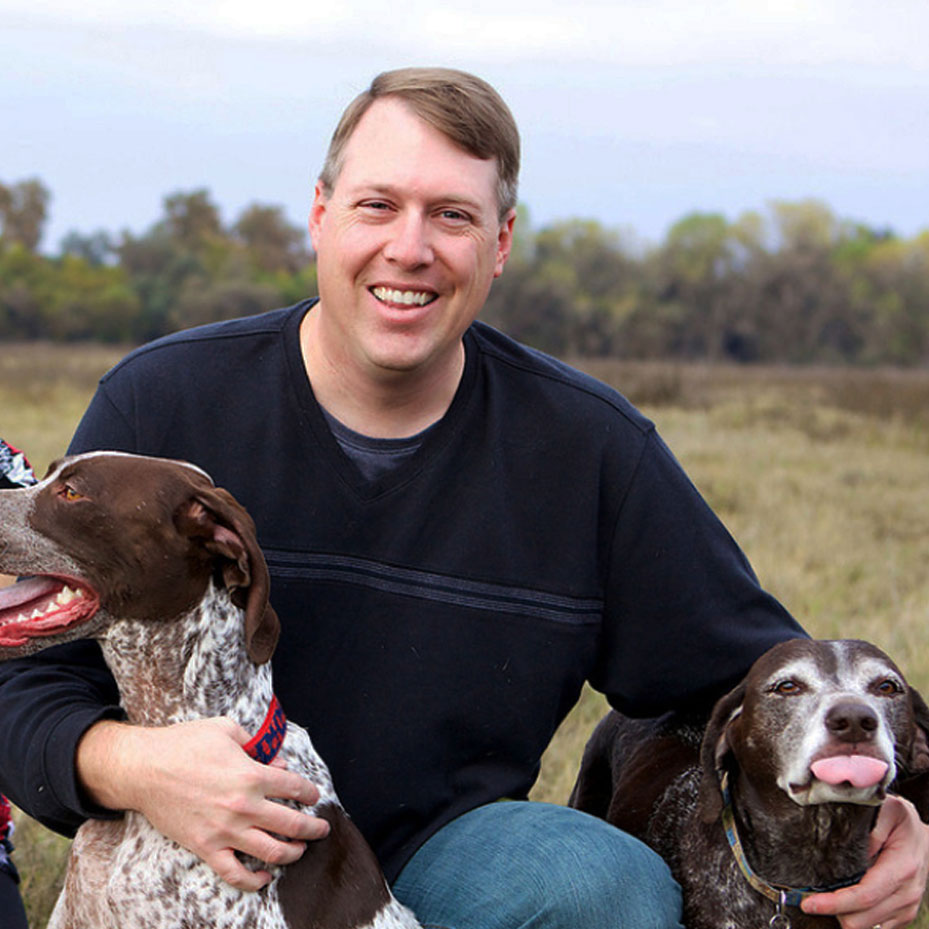
Scott Artis
Executive Director
Golden State Salmon Association
Season closed, low ocean abundance forecast in 2023
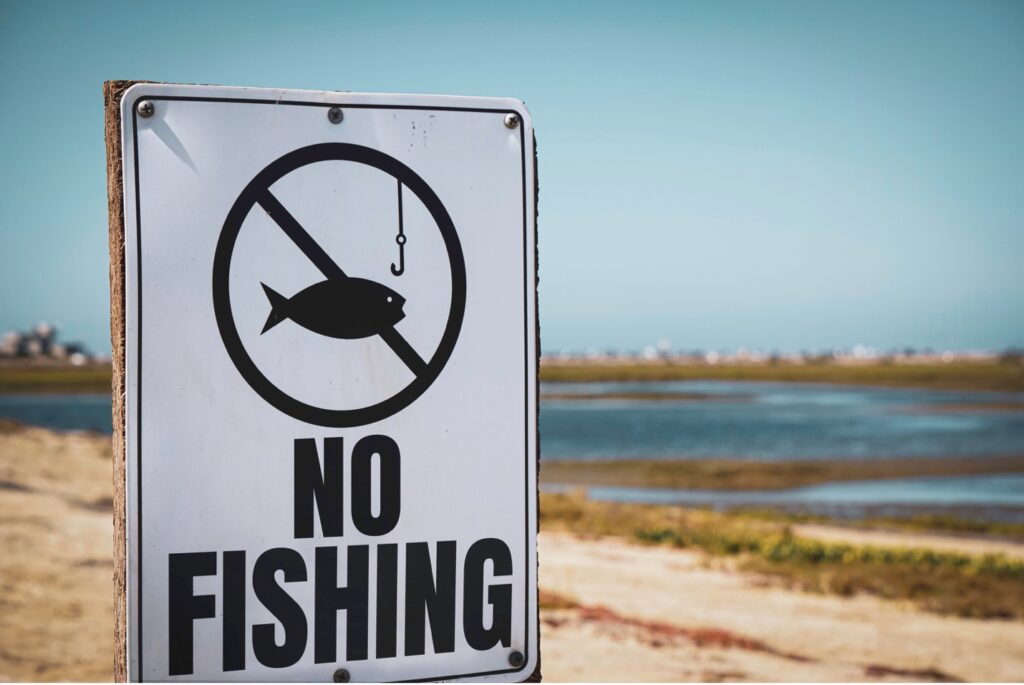
By now you probably know we aren’t going salmon fishing in California this year. This is only the second time California salmon fishing has been closed. Similar to the first ever closure in 2008 and 2009, this closure follows some very poor returns of adult and “teenage” salmon to the Central Valley last fall. The reasons will be debated, maybe for years to come, but it seems pretty clear that the main culprit was hot water that killed fertilized, incubating salmon eggs during the last three years of drought coupled with the miserable springtime out migration river conditions the last several years. The 2022 post-season Sacramento Index, which is the number of salmon calculated to have been alive off our coast last year, was just over 251,000. If there’s that many again this year and zero fishing pressure, we will hopefully see a decent (by modern standards) number of spawning salmon in the fall of 2023. Let’s just hope water temperatures don’t cook all of their eggs again. The Pacific Fisheries Management Council will meet in early April and procedurally finalize the closure. The closure affects all of California’s marine and likely all inland waters as well as ocean salmon fishing off most of the Oregon coast.
Lots of fishing closure press coverage
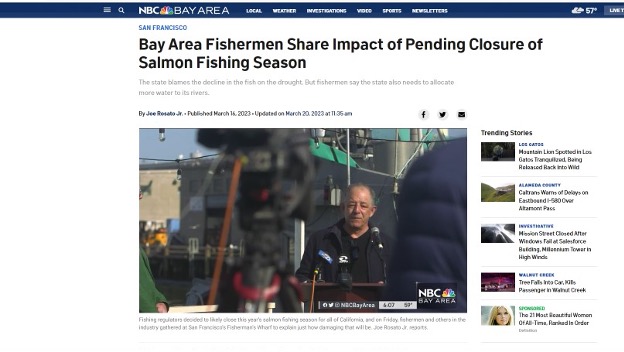
The closure of salmon fishing in 2023 has provided a platform to get the word out about what’s become of California’s salmon fishery and how we got there. Past polling has shown that many Californians aren’t even aware that California has salmon, so the closure has provided a way to educate them. As they become more aware, hopefully more people will care about the loss of salmon in California and want to be part of the solution to keeping our salmon runs healthy. GSSA has been proactive in working with the media to spread the word. This is a strategic decision, in part, to prevent others who might be antagonistic to salmon fishing and conservation from likely filling the void with “alternative facts.” We also saw the media interest as a way to build the political case for water reform, the lack of which got us into this mess in the first place.
Our press work also seeks to establish the fact that the closure hurts real people, something that those who claim water flowing to the ocean is a waste completely refuse to acknowledge. They don’t want it known that the excessive water diversions they got during the drought have resulted in no income in 2023 for many salmon fishermen and women, and the significant number of businesses that serve both the sport and commercial salmon boats. Part of our job is to make sure this side of the story gets out as well as the economic losses coastal restaurants, hotels and many other businesses will suffer.
Newsom orders a cut to salmon flows. Order rescinded a few weeks later
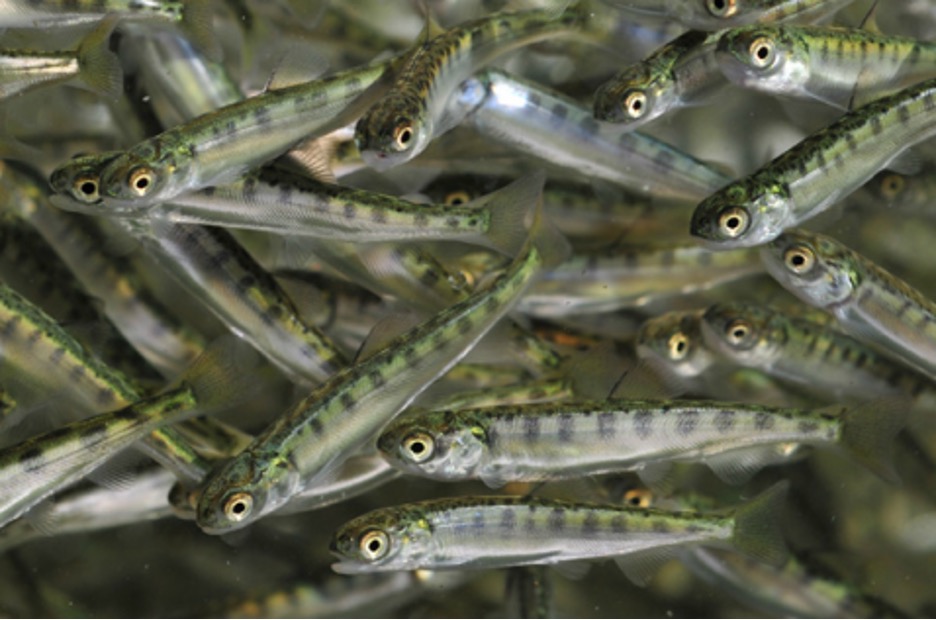
On February 13, Governor Gavin Newsom invited his water managers to waive state law aimed at protecting salmon and other species, which they did. Immediately, Delta outflow fell by almost half. The state’s Dept. of Water Resourcesadmitted that doing this would harm salmon in a number of ways including pulling juveniles off their natural outmigration route to their deaths in the interior Delta. Unbelievably, both state and federal agencies charged with protecting endangered species signed off on it even though the timing coincided with endangered juvenile winter run being in the affected parts of the Delta.
The Governor’s move also likely harmed some of the two million fish released at Coleman that were likely in the Delta on their way to the Bay and ocean. They are part of an experiment intended, in part, to restock the upper Sacramento Basin with salmon after recent disastrous returns to the upper Sacramento Basin. These fish are now probably lost.
Newsom’s actions followed weeks of criticism he took from San Joaquin Valley agricultural interests upset that some of January’s rainfall actually restored the freshwater ecosystem and flowed through the rivers in the state to the ocean. When heavy rains resumed in February, the Governor’s water board rescinded its rubber stamp, and the order was withdrawn.
GSSA Appoints New Executive Director

GSSA welcomes new executive director, Scott Artis. Artis replaces John McManus who is retiring after 10 years. Artis comes to GSSA with a strong record of proven leadership in a career spanning the conservation of various native California species and landscapes. He left an earlier career working in biotech research and business development. His conservation work has ranged from protecting natural areas in the Sierras and San Joaquin Valley to being a lead in a successful, years-long effort resulting in strong ecosystem protections for coastal salmon. He’s worked with donors and young people on environmental education programs by introducing youth to the rich natural world in the greater Bay Area.
Artis most recently worked at Turtle Island Restoration Network and at the Salmon Protection and Watershed Network (SPAWN) which honed his skills at bringing various social and economic sectors together to forge collaborative solutions to conservation problems. Getting sportsmen, environmentalists and others to work together for the good of a sustainable economy and a sustainable environment will remain a key task going forward. Artis’s membership on the Cordell Bank National Marine Sanctuary Advisory Council since 2018 has also given him deep experience working with a broad section of the marine and conservation communities.
McManus will remain engaged in GSSA, taking the role of Senior Policy Director. This will assist continuity in GSSA’s policies and mission to restore California salmon stocks. McManus also expects to help share the many important relationships with state and federal agency staff that have helped keep a voice for salmon conservation a priority.
GSSA’s board is looking forward, under Artis’s leadership, to growing the political strength of the organization in many ways including by expanding its membership and budget.
It’s raining but few natural smolts exist to take advantage of it. Hatchery fish will benefit
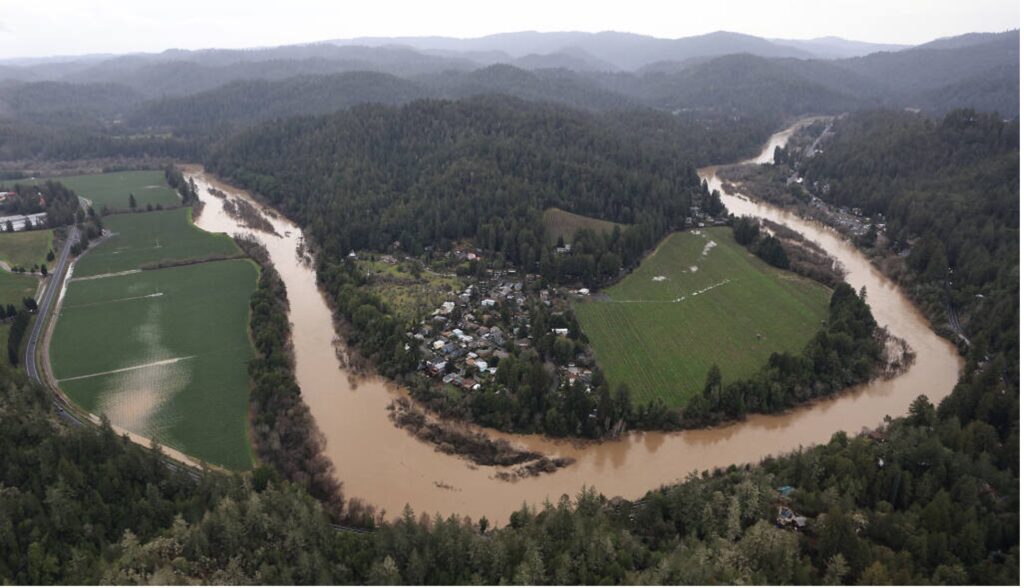
Two years after a rainy winter/spring like we’re currently experiencing, we can expect a healthy number of salmon to return to spawn. However, this relationship between rain and salmon production has been disrupted in recent years. After the poor return of adult salmon in 2022, coupled with the hot water they encountered during spawning, it’s likely that there are relatively few baby salmon in the Central Valley or Delta to take advantage of the good outmigration conditions. We sure hope we’re wrong about this. On the other hand, hatchery salmon, especially those from the Coleman hatchery in the northern Sacramento Valley, should survive at higher rates and provide a boost to the fishery. So too, hatchery fish that will be released in the Sacramento Valley from the Feather River and Nimbus hatcheries should do much better this year compared to recent past drought years.
Mishap at Coleman Hatchery
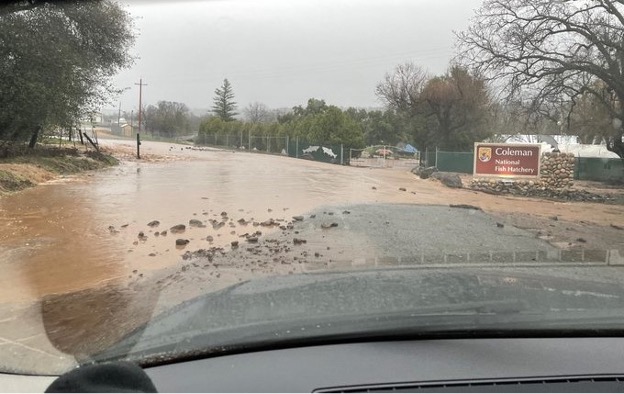
Flood waters filled parts of the Coleman Hatchery in March and likely caused some loss of fish being reared there. The extent of any possible damage will be better understood later in the spring when surviving fish are run through machines to tag, clip, and count them. Fingers crossed that no big losses will be discovered.
June 2023 Santa Rosa Dinner, volunteers and auction/raffle items needed!
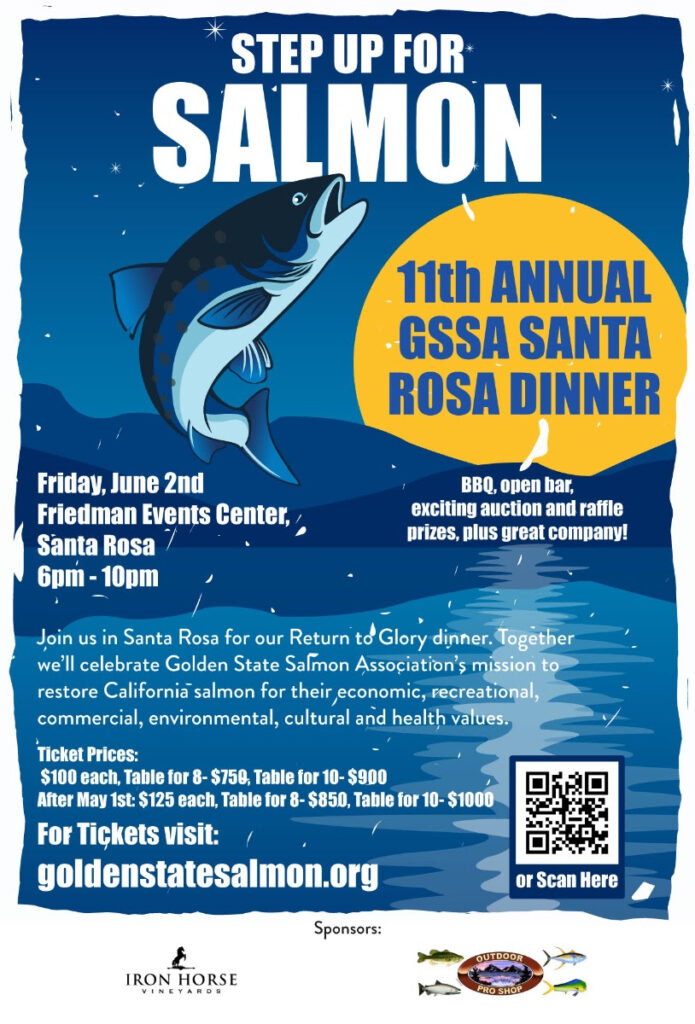
The annual Santa Rosa fundraising dinner event will go forward and is scheduled for Friday June 2. Although we won’t be fishing salmon in California this year, GSSA will continue working towards a day when closures will be no more…but we still need public support to get there. In 2023, we’ll continue working to improve hatchery releases and be engaged in other efforts to get higher salmon survival. We’ll still be helping see that the best habitat restoration projects are selected. We’ll still be a leading voice for salmon and need your support more than ever to restore California’s salmon.
We’re looking for some extra hands to help at the Santa Rosa dinner. If you would like to donate fishing trips, goods and gear, vacation rentals, or adventures to be auctioned off at the dinner, please contact GSSA at 855.251.4472 or Cat@goldenstatesalmon.org. Get your tickets today! Thanks!
Members of the SF Tyee Club present GSSA with a check for $4,000. Thank you Tyees!
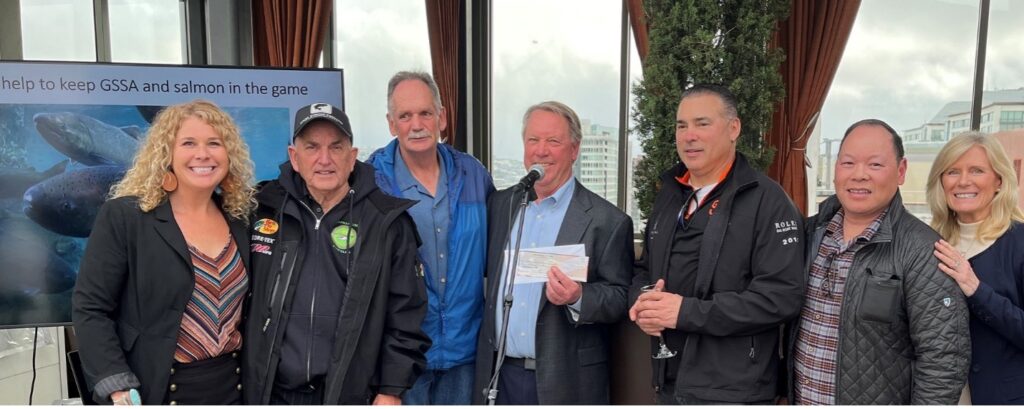
The SF Tyee Club, made up of sportfishermen who love to fish for salmon, recently gave GSSA a check for $4,000 to support our work to rebuild salmon runs. GSSA is extremely grateful to the Tyee Club, which is an all-volunteer effort.
Roger Thomas fund to take kids fishing picks up $13,000
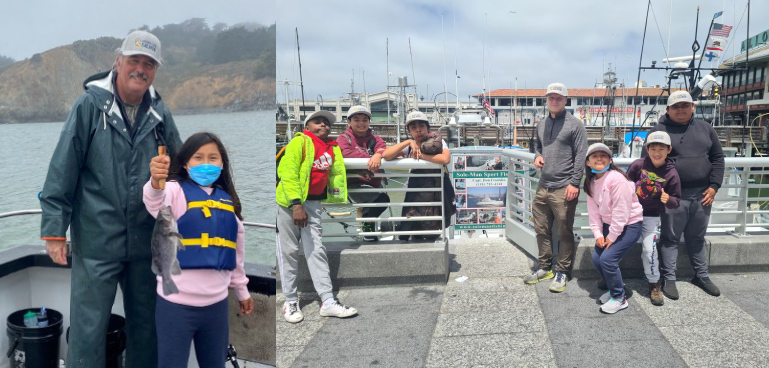
The Northern California Kayak Anglers Club recently donated $6,500 to beef up the Roger Thomas Fund, which pays to get kids out fishing. That donation came in memory of Kayak club member Joel Hernandez Lottila, a much beloved member. An anonymous donor associated with the club donated a matching $6,500, which means a lot of kids will be going fishing in the next several years. We’re very grateful to Joe Howard and the other club members for arranging this donation.
